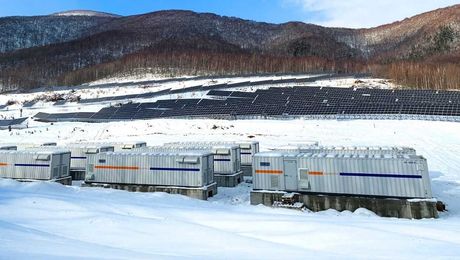Sungrow has announced that a 21 MWh utility-scale solar-plus-storage project powered by the Company in Hokkaido, Japan, has been commercially operational since December 2020, demonstrating the continued efforts in maximizing profit from solar energy and decarbonizing the Japanese economy under the feed-in-tariff (FiT) incentives.
The project occupies around 85 hectares in the most northern of Japan’s main islands, Hokkaido, which has seen the prolific deployment of renewable energy. Sungrow supplied both PV inverters and energy storage systems (ESS) to the aforesaid landmark plant. The turnkey energy storage system integrates DC-DC converters, NCM batteries, and BCP. The system uses DC-coupling, eliminating conversion losses while increasing efficiency. The batteries smooth the power generated, allowing it to be integrated into the grid more effectively. The containerized solution is easy for transportation, installation, and O&M. The robust design makes it durable and weather-resistant, especially important in Hokkaido where the temperature can be lower than -35 degrees Celsius. Notably, with PV inverter and energy storage system both offered by Sungrow, hassle-free equipment compliance, and O&M are ensured.
Solar farms in Japan had a high FiT rate but a limited capability to sell the energy into the grid. The project is having 6 MWdc PV capacity, while AC connection to the grid is limited to just 845kWac, which makes energy storage an ideal solution allowing power to be fed into the grid 24 hours a day. It will generate 7,050,000 kWh per year, entitling the FiT of JPY 21 per kilowatt-hour, powering 1,958 households, and offsetting carbon dioxide of 3,577 tonnes annually.
“As one of the countries with the most stringent grid codes, Japan presents us lots of opportunities and challenges. We value the continued trust of partners like Blue Power Energy and strongly believe that we’ll forge more ventures in the near future in both PV and energy storage segments,” said Sun Xiao, Country Manager of Sungrow Japan.

